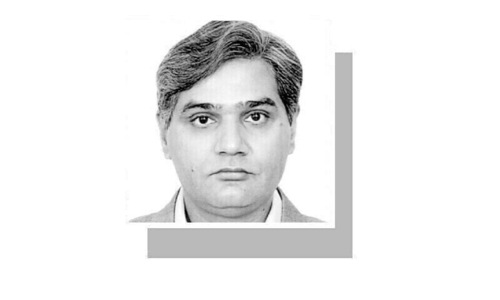Sindh has many unexplored cultural sites which could be used to expand the dying tourism industry of Pakistan. Remains of great ancient civilisations, like the Indus Valley Civilisation, add to their charm. Of these are the beautiful sites of the Kai and Naig Valleys.
On the way to the Kai and Naig Valleys, about 35 km from Sehwan, is an old hamlet known as ‘Bulo-Ji-Buthi’ (mound of Bulo), near a village that used to be inhabited by the Noohani tribe. ‘Bulo-Ji-Buthi’ is called such because the grave of Bulo Khoso of Kalhora period is located here on the hill-type mound. According to legend Bulo was a brave person whose reputation for bravery spread from Kai to Gaaj. The mound had a damaged kot (compound wall of stones) all around it.
Further away, about 40km from Sehwan, is the Kai valley, which offers scenic vistas on both sides of the road. It seems as if the hills were once below sea level because there are visible signs of erosion from water waves. A narrow and difficult track leads to the two cave sites. The lower site, locally called “Satt Ghariyoon” (Seven caves), is to the east of the village Muhammad Khan Noohani, situated near a mountainous water stream. The upper site lies to the south of the village, at the top of the hill which is surrounded by an ancient Kot or compound wall of stones; here the remains of ancient hamlets and pieces of terracotta pottery have been found. Some potsherds were black-on-red and some were plain. The pottery belonged to the old Indus Valley civilisation and the caves to the Stone Age.
Taj Saharai, a native writer, mentions four prehistoric or Chalcolithic sites here, namely: Bulo-Ji-Buthi, Nuko-Buthi, Kai-Buthi and Naig.
Taj Saharai also found the Zoroastrian Tower of Silence here. Near the lower caves, there is a garden known as Panj-Tan-Jo-Bagh (garden of five sacred personalities) planted with date palm and other trees. One can see a water mill on the centuries-old spring; this water is also used by the locals for cultivation. Kai has a rest house as well.
The Naig Valley, with the Bado on the east and the Bhit section of Khirthar on the west, is about 45 km away from Sehwan, on the road passing through Jhangara and Bajara. Date palm trees are found throughout the valley, along with peepal trees, which were planted during the Buddhist era, and other trees. The view of the beautiful Naig valley from the top of the hill is spectacular. There is a water mill on the water coming from the spring in this valley too, used by the locals to grind flour.
The village takes its name from the Naig stream that waters the valley. The word ‘Naig’ is derived either from the Sindhi word Ningh (a big earthen pot in which corn and other grains are cleaned) or Nihing (edge) because the village looks like Ningh from the hills and lies on the Nihing of the stream.
There are four ancient sites around the Naig Valley. First is Lakhmir-Ji-Maari or mound which lies to the south of the Naig village on a high hill on the way to Nighawal. This is an ancient route once used by Jogis and mystics. It leads from Sehwan to Naig, Nigawal, Lahoot and Hinglaj. The second site is the stupa and the unbuilt Kot on top of the hill to the north of the Naig village. The third is Mai Rohi, named after the daughter of the cruel king Lakhmir who had been fossilised by Hazarat Ali. A well believed to be connected to Hazrat Ali is also located near it. The fourth site is the tomb of Pir Qamber Ali Shah (I) whose ancestors had migrated from Jilan of Iran to Kalat and Zeedi of Balochistan.
Lakhmir-Ji-Maari had not been explored by N.G. Majumdar, but he writes that fragments of Chalcilithic pottery were scattered all over the hill of Lakhmir and also in the area around its base. At the base of the hill, we found embedded debris and other stone walls that appeared to belong to the prehistoric era. Specimens of black-on-red pottery of the Indus type and a fort could also be seen. Excavation must be conducted at the prehistoric mound of Lakhmir-Ji-Maari and all these sites should be promoted as Sindhi cultural heritage.
















































